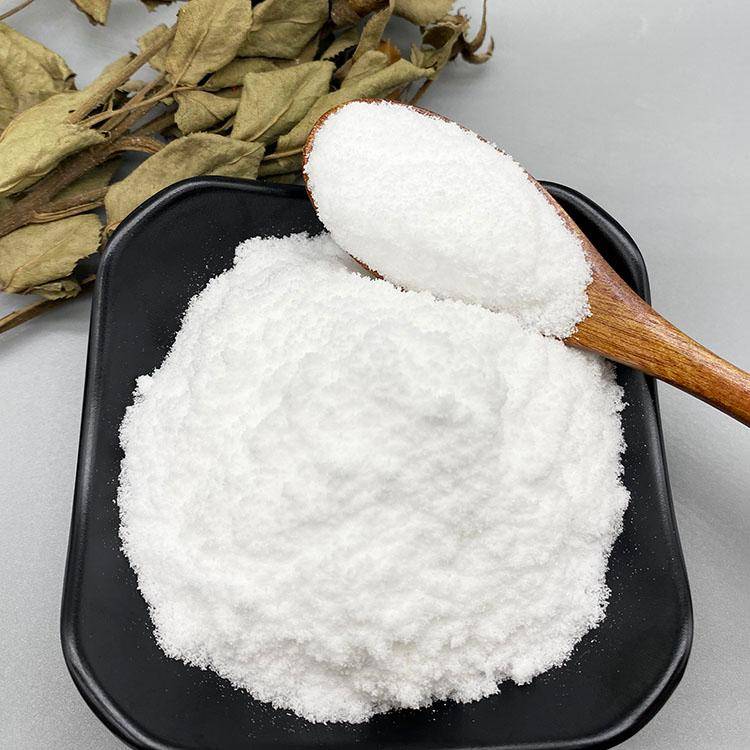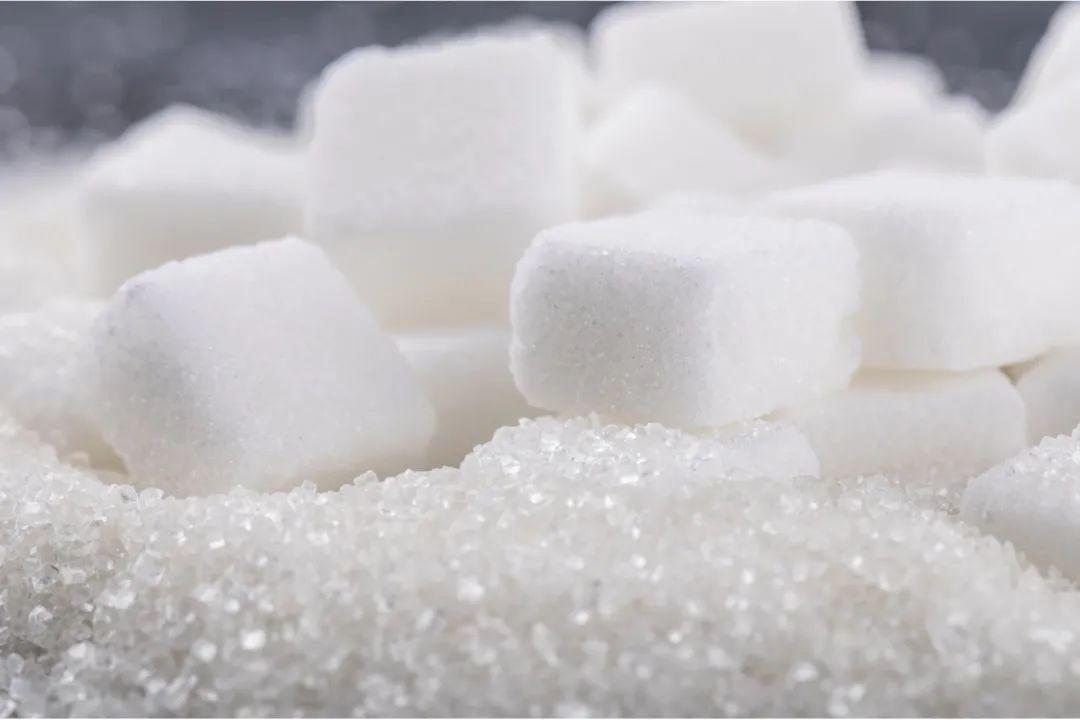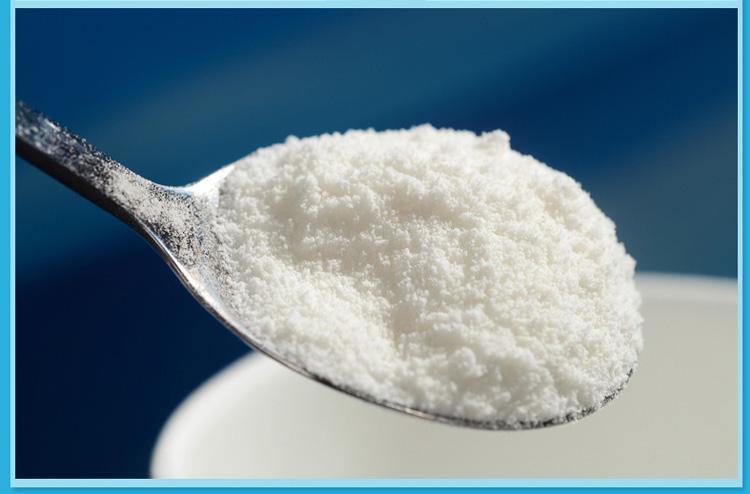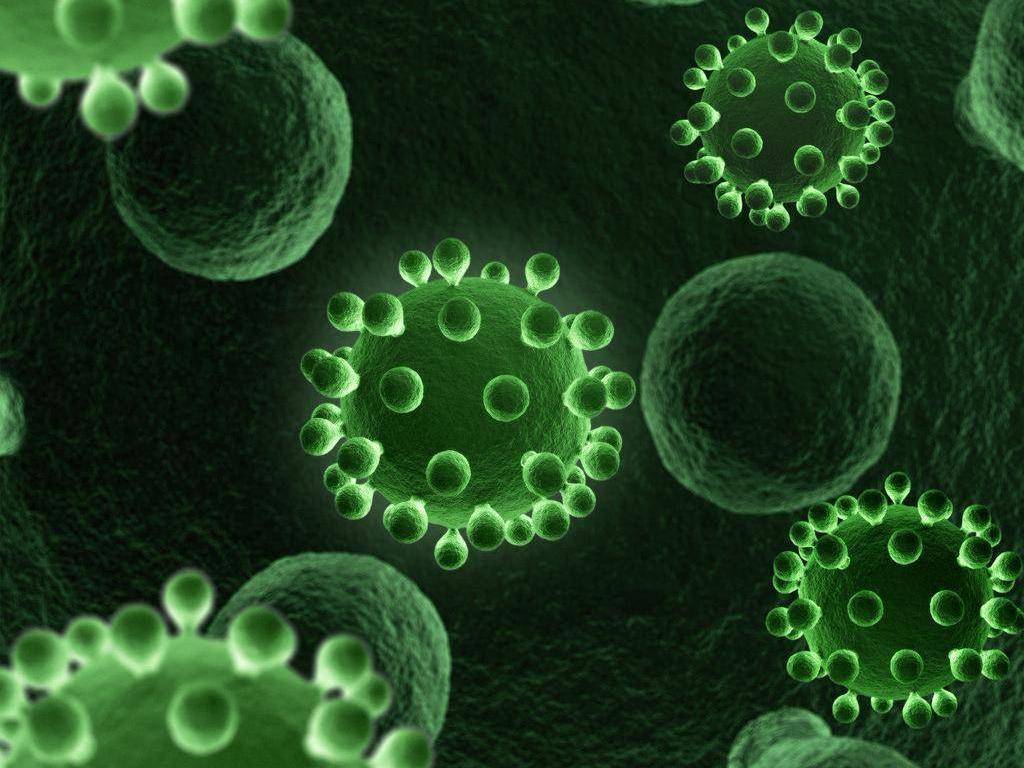Is Allulose Safe?
Sweetness is an innate human taste. However, chronic diseases such as overweight, diabetes, and the “three highs” (high blood pressure, high blood sugar, high blood fat) caused by excessive sugar intake over a long period of time, as well as a series of secondary health problems caused by these diseases, have become increasingly prominent. According to projections by the International Diabetes Federation (IDF), there are currently about 135 million diabetes patients in China[1].
Since the outbreak of the “new crown” epidemic, people's attention to health issues and healthy lifestyles has increased to an unprecedented degree. Tasty and healthy are always the dual needs of the public for a better life, so the development and application of low-calorie sweeteners has become an effective way to ensure both taste and health. D-allulose is a low-calorie sweetener that is closest to sucrose in terms of physical and chemical properties, texture characteristics, and processing performance. It has also been evaluated by FoodNavigator-USA as the most promising sucrose substitute. Its molecular structure is shown in Figure 1 [2].
On April 17, 2019, the U.S. Food and Drug Administration (FDA) announced that D-allulose would no longer be counted as added sugar or total sugar on labels [3]. In addition to its low caloric value, researchers have also found that D-allulose can suppress postprandial blood glucose levels [4] and control obesity and diabetes [5-6]. Unlike sugar alcohol sweeteners such as erythritol, D-allulose does not cause bloating, can undergo the Maillard reaction, and has good application characteristics in the baking industry [7-8]. The dual demand for health and taste has promoted the rapid development of the technology and production and application of allulose. There have been significant advances in the construction of D-allulose 3-epimerase (DAE)-producing strains and the expression of the enzyme protein [9-10], the immobilization of the enzyme [11], the evaluation of food safety [12-14], the conversion of allulose [15] and the isolation and crystallization of allulose [16-17].

In terms of the industrialization of D-allulose, Matsutani in Japan, ERN in the United States, Tate & Lyle in the United Kingdom, and CJ CheilJedang in South Korea already have production lines with a capacity of thousands of tons. Domestically, due to the impact of the erythritol storm, there is a high degree of concern about the development of D-allulose. The technical barriers to D-allulose are mainly reflected in the development of DAE preparations and process control, and its core technology is the construction of isomerase strains and the expression of enzyme proteins.
At present, COFCO Institute of Nutrition and Health Co., Ltd. [18-19], Tianjin Institute of Industrial Biotechnology, Chinese Academy of Sciences [20-21], and Jiangnan University [22-23] all have the corresponding strain construction and enzyme protein expression technologies for DAE. There are also many companies in China that are setting up D-allulose production lines. Anhui Jinhe Industrial Co., Ltd., Shandong Bailong Chuangyuan Biotechnology Co., Ltd., Shandong Baolingbao Biotechnology Co., Ltd., and Shandong Fuyang Biotechnology Co., Ltd. all have production lines with a capacity of thousands of tons. In addition to these four companies, COFCO Bio-Technology Co., Ltd., Shandong Fukuan Bioengineering Co., Ltd., and Binzhou Sanyuan Biotechnology Co., Ltd. are each building or planning to build production lines with a capacity of 10,000 tons [24].
1 Administrative licensing process for allulose abroad
1.1 Americas
Since 2011, a number of companies have applied to the FDA for “generally recognized as safe” (GRAS) certification for D-allulose. See Table 1 for details. The first was the application by CJ CheilJedang Corporation to the FDA for GRAS certification in 2011, which received a “no problem” response (GRAS Notice No. GRN 400) in June 2012, recognizing that -allulose as a food additive. The Matsutani Group also applied to the FDA for GRAS certification for its product D-allulose, and in 2014 received a “no problem” response (GRAS Notice No. GRN 498). The report concluded that there were no side effects in human experiments with a daily intake of 31-33 g D-allulose. Since then, D-allulose has been classified as a conventional carbohydrate substitute and does not pose any safety concerns.
After 2017, Samyang Group in South Korea successively applied for and obtained GRAS (GRAS Notice No. GRN 693; GRAS Notice No. GRN 828) certification for D-allulose as a food additive through enzymatic conversion of different sources of isomalt. In 2019, Tate & Lyle also applied for GRAS (GRAS Notice No. GRN 893) certification . Unlike other companies, the D-allulose declared by Tailai Group is obtained from starch through a series of enzymatic transformations. Since then, D-allulose has gradually gained market recognition in the Americas. In April 2019, the FDA announced that D-allulose would be excluded from the “added sugar” and “total sugar” labels, and the energy of D-allulose would be calculated as 1.67 kJ·g-1. This announcement means that the restrictions on the use of D-allulose will be further relaxed from the original basis [3].
The processes and isoenzymes for which different companies have declared GRAS certification are slightly different. The microorganisms that express DAE include genetically edited Bacillus subtilis and Escherichia coli, as well as non-genetically edited Microbacterium foliaceum. CJ, Songgu and Samyang Group all use fructose as a raw material and produce D-allulose through the catalytic conversion of whole cells expressing DAE. The Tate & Lyle Group, on the other hand, uses corn starch as a raw material and produces D-allulose through multi-step enzymatic catalysis. The recommended intake for different units is 25-42 g per person per day.
The uses and maximum use levels of allulose declared by the CJ CheilJedang, Matsutani, and Samyang Groups are shown in Table 2. D-allulose can be used as a sugar substitute in baked goods such as bread, cakes, pies, pastries, and cookies, as well as in beverage products such as carbonated drinks, non-carbonated drinks, and blended coffee. It can also be used in chewing gum, hard candy, soft candy (including non-chocolate, plain chocolate, and chocolate coating), desserts , frozen dairy products, yogurt , medical foods , instant cereals and other foods . The usage level varies between 2% and 100%. This table first shows the declared usage level of CJ, and Songgu and Samyang referred to this usage method. Among them, Samyang revised the maximum usage level of baked goods to 10% of the quality of baked goods in GRAS Notice No. GRN 693.
1.2 Japan and South Korea
In 2016, in order to make it easier for consumers to understand the nutritional information of foods, the Ministry of Food and Drug Safety (MFDS) of South Korea partially revised the nutritional labeling methods for foods. In this revision, the caloric coefficient of D-allulose was set to 0 kJ·g-1. In 2018, the MFDS announced the proposed revision of food standards and regulations, listing D-allulose as an ingredient in foods. In 2019 the Korean Food Labeling Act was supplemented to stipulate that if sugar alcohols and cellulose are listed separately in the nutrition facts table of food, the calories need to be calculated based on the sum of all ingredients. However, this Act stipulates that the calorie values of erythritol and D-allulose be calculated as 0 kJ·g-1. In 2020, South Korea issued a draft amendment to the “Implementation Decree of the Liquor Tax Law”, which stipulates that that D-allulose can be used as an additive in alcoholic beverages. Since then, the scope of D-allulose use in South Korea has gradually been relaxed.
Japanese scholars began researching the safety of D-allulose consumption early on [25-26]. In 2016, the Japan Consumer Affairs Agency began approving health foods that listed D-allulose as a functional ingredient. The claimed function is to control postprandial blood glucose elevation by inhibiting glucose intake, which has the effect of suppressing obesity. In 2019, the Japanese Ministry of Health, Labor and Welfare (MHLW) approved the listing of DAE as food additive and formulated corresponding standards and specifications. On March 31, 2021, the Ministry of Health, Labor and Welfare of Japan issued Notice No. 0331-2, which amended the “Detailed Rules for the Implementation of the Food Sanitation Law” and the “Specifications and Standards for Food and Additives”. The amendments include adding D-allulose to the list of additives allowed for use. Since then, the acceptance of D-allulose in Japan has gradually increased.
1.3 Australia and New Zealand
In January 2022, the Australian New Zealand Food Standards Agency (FSANZ) issued Circular No. 185-22, which approved D-allulose as a novel food in Application No. A1247. The application was submitted by the South Korean Samyang Group, which proposed to use fructose as a raw material and the DAE-expressing Microbacterium foliorum SYG27B-MF enzyme for the enzymatic conversion to produce D-allulose. In this application, Samyang Group also applied for an exclusive 15-month license for D-allulose as a novel food (which can be used in all types of food). The production method for allulose applied for by Samyang Group is the same as that described in GRAS Notice No. GRN 828. Since then, allulose has been licensed in the Australia and New Zealand region and can be gradually consumed in the region.
1.4 EU region
In 2021, Matsutani, Ingredion, Cosun Beet Co. and Samyang Group announced the formation of a new consortium to help introduce D-allulose into the UK and EU markets and support the use of D-allulose as a carbohydrate for nutrition labelling. The consortium is known as the Allulose Novel Food Consortium (ANFC)[27].
In April 2021, the European Food Safety Authority (EFSA) conducted a safety assessment of DAE produced by Matsutani and expressed by E. coli K-12 W3110 (pWKLP) and concluded that it is not risky [28]. On October 18, 2021, EFSA issued an opinion on the safety assessment of DAE produced by a genetically modified strain of Gluconobacter xylinus FIS002 . In this opinion, the technology for the enzyme and the strain, which is derived from the company CJ CheilJedang, is used to catalyze the conversion of fructose to D-allulose. The team of experts from the assessment panel believes that under the expected conditions of use, although the risk of allergies or elicited reactions caused by dietary exposure cannot be ruled out absolutely, the probability of such risks occurring is very low. Therefore, the assessment panel concluded that the enzyme does not pose a safety risk under normal conditions of use [29].
In 2023, EFSA also conducted a safety assessment on D-tagatose 3-epimerase expressed by E. coli PS-Sav-001, which is provided by Savannah Ingredients Ltd. and is used to catalyze the production of D-allulose from fructose, and concluded that it is not risky [30]. However, the EU has not yet included allulose as a new food ingredient.
2 The licensing process for allulose in China
2.1 Application process
The application for D-allulose as a new food ingredient satisfies the requirement in the Administrative Measures for the Safety Review of New Food Ingredients that there is no traditional eating habit in China. Traditional consumption habits refer to the fact that a food product has been produced and sold as a packaged food product in a defined or non-defined form for more than 30 years in a province, and is not listed in the Pharmacopoeia of the People's Republic of China. D-allulose is classified as a food ingredient with a changed original structure from among the four categories of food ingredients: animals, plants and microorganisms; ingredients isolated from animals, plants and microorganisms; and other newly developed food ingredients.
The internal logic of declaring D-allulose as a new food ingredient in China is as follows: D-allulose is safe to eat and the raw materials and auxiliary materials involved in its production are all safe, which is a necessary condition for declaring it as a new food ingredient. As mentioned above, D-allulose is made from fructose as a raw material and is obtained by catalytic conversion of DAE. Therefore, the declaration of DAE in the Food Safety National Standard Food Additive Use Standard (GB 2760-2014) food additive list is a prerequisite for the declaration of D-allulose as a new food ingredient. Currently, all DAE are produced by expressing recombinant genes in engineered bacteria. Therefore, the safety and stability of recombinant genes and engineered bacteria are necessary conditions for the declaration of DAE in the GB 2760-2014 list. The process of declaring D-allulose as a new food ingredient in China is shown in Figure 2.

First, apply for a safety evaluation of the recombinant gene editing DAE. This part of the evaluation is completed by the Ministry of Agriculture under the commission of the National Health Commission. This part of the evaluation is designed to ensure that the introduction of exogenous traits does not increase the risk of the production strain in terms of food safety or environmental safety. The molecular characteristics of the strain are clear, the function of the exogenous protein is clear, the genetic stability is high, and it will not bring higher risks to people, animals, and the environment. Second, the DAE is declared for administrative licensing and included in the catalog of the National Food Safety Standard for Food Additive Use (GB 2760–2014). The purpose of this administrative license is to ensure that DAE is safe and reliable as a processing aid for the food industry – an enzyme preparation for use in the food industry [31]. Finally, based on the first two steps, D-allulose is declared as a new food ingredient. This part aims to ensure that D-allulose is safe to eat and will not have a negative impact on human health.
2.2 Recombinant gene safety evaluation
The safety evaluation of recombinant genes is the first step in applying for D-allulose as a new food ingredient. This part was commissioned by the State Commission of Health and Family Planning Commission to the Ministry of Agriculture. The applicant is required to provide supporting materials for the safety evaluation of the recipient microorganism, materials for the safety evaluation of genetic manipulation, safety evaluation of genetically modified microorganisms for animals, and safety evaluation of genetically modified microbial products for animals.
This part involves a large number of biological experiments, which are costly, labour-intensive and time-consuming. As far as the author knows, only two units have declared the safety evaluation of recombinant genes expressing DAE as required. The first is the China Agri-Industries Nutrition and Health Research Institute Co., Ltd., which submitted an application for evaluation jointly with China Agri-Industries Biotechnology Co., Ltd. in early 2022 and was approved by the Ministry of Agriculture in May 2022. The other is Anhui Jinhe Industrial Co., Ltd., which submitted an application for safety evaluation in the second half of 2022 and has also been approved.
2.3 Safety evaluation of enzyme preparations
The safety evaluation of enzyme preparations is the second step in the declaration of D-allulose as a new food ingredient. The quality specifications for enzyme preparations are required to comply with the provisions of the Food Safety National Standard Food Additives Food Industry Enzyme Preparations (GB 1886.174-2016) [32]. The National Center for Food Safety Risk Assessment is commissioned by the National Health Commission to conduct a technical review. In this part, a comprehensive review is required of the physical and chemical properties, biological characteristics, raw materials and production processes, and toxicology (including acute oral toxicity, three genetic toxicities, 90-day oral toxicity, and teratogenicity) of the DAE. The National Health Commission then gives an approval opinion based on the technical review results of the Risk Assessment Center and issues a notice to solicit opinions from the whole society.

This part involves animal experiments, which are costly. Domestic central enterprises are not keen to pay for this part of the cost. At present, only COFCO Institute of Nutrition and Health Co., Ltd. and COFCO Biochemical Co., Ltd. have submitted the application materials in 2022. Their safety and technological necessity have passed the technical review of the expert review committee, and on December 8, 2022, the National Health Commission will seek public comments. In addition, Anhui Jinhe Industrial Co., Ltd. is also actively preparing the application materials for the enzyme and is expected to submit the application in the second half of 2023.
3 Outlook
Following the GRAS certification of D-allulose in the United States, 13 countries/regions including Australia and New Zealand, Japan and South Korea have approved it as a food or additive. In addition, the Tate & Lyle Group has obtained Good Manufacturing Practice (GMP) certification for its production line in Mexico.
Although D-allulose has not yet been approved in the EU and China, in Europe, companies such as Matsutani, Ingredion and Samyang are actively promoting the administrative licensing of D-allulose. In China, COFCO Institute of Nutrition and Health and COFCO Biochemical Technology Co., Ltd. are methodically promoting the administrative licensing of D-allulose as a new food ingredient. Subsequently, Anhui Jinhe Industrial Co., Ltd. is also actively promoting its own DAE administrative licensing. In addition, many domestic companies are also waiting to see the progress of the DAE administrative licensing.
Reference:
[ 1 ]International Diabetes Federation.IDF DIABETES ATLAS Ninth edition 2019[R]. IDF, 2019.
[2] Wang Jingyan, Zhu Shenggeng, Xu Changfa. Biochemistry (3rd Edition) [M]. Beijing: Higher Education Press, 2002.
[3] THOMPSON A. FDA to allow leaving allulose off of total, added sugars declarations on labels[J].Candy Industry, 2019, 184(5): 1
[4]CHUNG M Y, OH D K, LEE K W. Hypoglycemic health benefifits of D-psicose[J].Journal of Agricultural and Food Chemistry, 2012, 60(4): 863-869.
[ 5 ]RAKHAT Y, KANEKO K, Wang L, et al. D-allulose inhibits ghrelin-responsive, glucose-sensitive and neuropeptide y neurons in the arcuate nucleus and central injection suppresses appetiteassociated food intake in mice[J]. Nutrients, 2022, 14(15):3117.
[6]SHINTANI T, YAMADA T, HAYASHI N, et al. Rare sugar syrup containing d-allulose but not high-fructose corn syrup maintains glucose tolerance and insulin sensitivity partly via hepatic glucokinase translocation in wistar rats[J].Journal of Agricultural and Food Chemistry,2017, 65: 2888-2894.
[7]SAWETTANUN S, OGAWA M. Physicochemical parameters, volatile compounds and organoleptic properties of bread prepared with substituted sucrose with rare sugar D -allulose[J]. International Journal of Food Science & Technology, 2022, 57(9) : 5931-5942.
[8] Wei Chao, Guo Zhen-sen, Zhang Yuan, et al. Construction of a high-efficiency expression system for glycosyltransferase and allo-keto-lactose isomerase in filamentous fungi [J]. Contemporary Chemical Industry, 2022, 51(12): 2887-2892.
[9] LIU Z Z,WANG Y F, LIU S H, et al. Boosting the heterologous expression of D-allulose 3-epimerase in bacillus subtilis through protein engineering and catabolite-responsive element box engineering[J]. Journal of agricultural and food chemistry, 2022. of ag8, 12128-12134.
[ 10]TANG X, AN Y, Iqbal M W, et al. The characterization of a novel D-allulose 3-epimerase fromablautia produca roducaaproducaomase froD-allulose production[J].JFoods. 2022; 11(20):3225
[ 11]XUE K, LIU C L, YANG Y K, et al. Immobilization of D-allulose 3-epimerase into magnetic metal-organic framework nanoparticles for efficient biocatalysis[J]. World Journal of Microbiology and Biotechnology, 2022, 38(8): 144.
[ 12]NISHII N, TAKASHIMA S; KOBATAKE Y, et al. The long-term safety of D-allulose administration in healthy dogs[J]. Journal of Veterinary Medical Science, 2017, 79(11): 1780-1784.
[ 13]NISHII N, NOMIZO T, TAKASHIMA S, et al. Single oral dose safety of D-allulose in dogs[J].The Journal of veterinary medical science, 2016, 78(6): 1079-1083.
[ 14]TEYSSEIRE F, BORDIER V, BUDZINSKA A, et al. Metabolic effects and safety aspects of acute D-allulose and erythritol administration in healthy subjects[J]. Nutrients. 2023; 15(2):458.
[15] Feng L. Research on the synthesis of D-allulose from D-fructose catalyzed by multiple enzymes [D]. Wuxi: Jiangnan University, 2021.
[16] Sun Z, Cheng Q, Ji Q, et al. Bioconversion of D-allulose and optimization of the cooling crystallization process [J/OL]. Food and Fermentation Industry. doi.org/10.13995/j.cnki. 11-1802/ts.034200.
[17] Guo Yuanheng, Lv Zhe, Ding Ziyuan, et al. Optimization of crystallization process of D-allulose in ethanol system [J]. Food Industry Science and Technology, 2019, 40 (24): 185-189.
[18] Wang Jing, Tong Yi, Pan Xichun, et al. D-Allulose 3-epimerase encoding gene, vector, recombinant cell and their application: CN 110904132B [P]. 2022-08-16.
[19] Li Yi, Shen Xuemei, Zhang Yuan, et al. D-Allulose 3-epimerase encoding gene, vector, recombinant cell and their application: China, CN111019928B[P]. 2022-08-16.
[20] Zhu Yueming, Chen Peng, Sun Yuanxia, et al. An engineered Bacillus subtilis strain expressing D-allulose 3-epimerase and its application: CN113249287B[P]. 2021-09-24.
[21] Zhu Yueming, Chen Peng, Zeng Yan, et al. A mutant of D-allulose 3-epimerase, an engineered bacterium expressing the mutant, and its application: CN112852795B[P]. 2022-04-08.
[22] Wu Jing, Liu Zhanzhi, Long Naiyun, et al. A mutant of D-allulose 3-epimerase and its application: CN113373135B[P]. 2022-08-23.
[23] Jiang Bo, Mu Wanmeng, He Weiwei, et al. Construction method of recombinant Bacillus subtilis expressing D-allulose 3-epimerase based on reverse screening of the toxic protein MazF: CN104962508A[P]. 2015-10-07.
[24] Kang Dan. Analysis of the investment value of Chinese functional sugar companies [D]. Dalian: Dongbei University of Finance and Economics, 2022.
[25]YOKO S, WATARU K. Safety evaluation of Long-term Feeding of D-psicose-carrier-complex for rats[J]. The FASEB Journal, 2015, 29. [26]TATSUHIRO M, REIKA ISHII, YOKO S. The 90-day oral toxicity of D-psicose in male Wistar rats[J]. Journal of Clinical Biochemistry and Nutrition, 2012, 50(2) : 158-161.
[27] Zhang L. Research on allulose and its development trend under the “sugar reduction” perspective [J]. Food Safety Guide, 2022 (16): 184-186.
[28] LAMBRE C, BARAT B J M, BOLOGNESI C, et al. Safety evaluation of the food enzyme d-psicose 3-epimerase from the genetically modified Escherichia coli strain K-12 W3110 (pWKLP)[J]. EFSA Journal, 2021, 19(4): e06565-e06565.
[29]LAMBRE C, BARAT B J M, BOLOGNESI C, Safety evaluation of the food enzyme d-psicose 3-epimerase from the genetically modified Corynebacterium glutamicum strain FIS002[J]. EFSA Journal, 2021, 19(10): e06870-e06870.
[ 30 ]LAMBRE C, BARAT B J M, BOLOGNESI C, et al. Safety evaluation of the food enzyme d-tagatose 3-epimerase from the genetically modified Escherichia coli strain PS-Sav-001.[J]. EFSA journal,2023, 21(2) : e07752-e07752.
[31] National Health and Family Planning Commission of the People's Republic of China. GB2760-2014 National Food Safety Standard: Food Additive Use Standards [S]. Beijing: China Standards Press, 2014.
[32] National Health and Family Planning Commission of the People's Republic of China. GB1886.174-2016 National Food Safety Standard: Food Additives: Food Industry Enzyme Preparations [S]. Beijing: China Standards Press, 2016.


 English
English French
French Spanish
Spanish Russian
Russian Korean
Korean Japanese
Japanese






